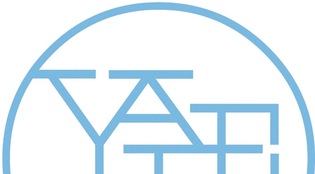 loading
loading
Press run The press may soon scrap its Paul Rand–designed logo. View full imageFor decades of its existence, YUP has been able to tap an unusual cash cow -- its 35-year-old London office, which specializes in high-end art books. The art division publishes eye-poppingly beautiful books, many of them for the world's great museums, including the Met in New York, the Art Institute of Chicago, and London's National Gallery. Art books generally roll off the presses in small print runs, measured in the hundreds, but can make money even with small retail sales. "Their art books are unparalleled," says literary agent Wendy Strothman, who once ran Houghton Mifflin's trade division and sat on the YUP board until 2003. "Princeton has a superb economics list, and Harvard does well in American history. But Yale has a deep understanding of its strong suits -- in the arts, music, and the humanities." The third leg of the YUP stool, after academics and art, is trade books, which loosely translates into books that you are likely to read. University presses have flirted with trade books over the years. The University of Chicago published Norman Maclean's A River Runs Through It, and the Naval Institute Press published Tom Clancy's million-selling Hunt for Red October. Starting under Donatich's predecessor, John Ryden, Yale has been no exception. Past best-sellers include Mary Chesnut's Civil War, a Civil War diary edited by C. Vann Woodward; and John Cecil Masterman's Double-Cross System, about Britain's World War II code breakers. Kenneth Jackson's Encyclopedia of New York City was a surprise hit, spawning the (less successful) encyclopedias of Ireland and New England. Here is what passes for a diva in the university press world: the press's Lichens of North America, with 900 full-color photos, has sold more than 7,000 copies, grossing over $300,000 in sales. Lichens also won an important award for scholarly reference books in 2001. Sales like that are rounding errors on a Stephen King novel, but for a university press they might easily throw a year of red ink into profitability. Under Donatich -- who previously ran Basic Books, a highbrow hybrid of academic and trade publisher -- trade has a secure place. Jane Friedman, the longtime chief executive of Rupert Murdoch's HarperCollins books, sits on his board. He just lured away a top executive from Disney-owned Hyperion to take over part of the YUP marketing apparat. "They've started to be a little more tradey, and little less ivory-tower," says Nelson of Publishers Weekly. YUP intends to deepen its commitment to "mid-list" trade books scorned by larger publishers. Mid-list books are not destined to appear on best-seller lists, but they are generally cheap to acquire and earn back their authors' advances after sales of just a few thousand copies. YUP's advances are firmly rooted in the four and five figures. "I don't need all the fingers on one hand to count the times we have paid a six-figure advance," says Donatich. Here are some books that won't have to sell millions to return tidy, modest profits to YUP: Gore Vidal's Inventing a Nation, the first of a small-format Icons of America series; financier Leon Black has agreed to underwrite a biographical series called Jewish Lives, with Ron Rosenbaum ’68 writing on Bob Dylan, and Robert Gottlieb on Sarah Bernhardt. Donatich has signed up several well-known writers to explain why something matters: Adam Kirsch will explain Why Trilling Matters, Jay Parini will argue Why Poetry Matters, and so on.
|
|